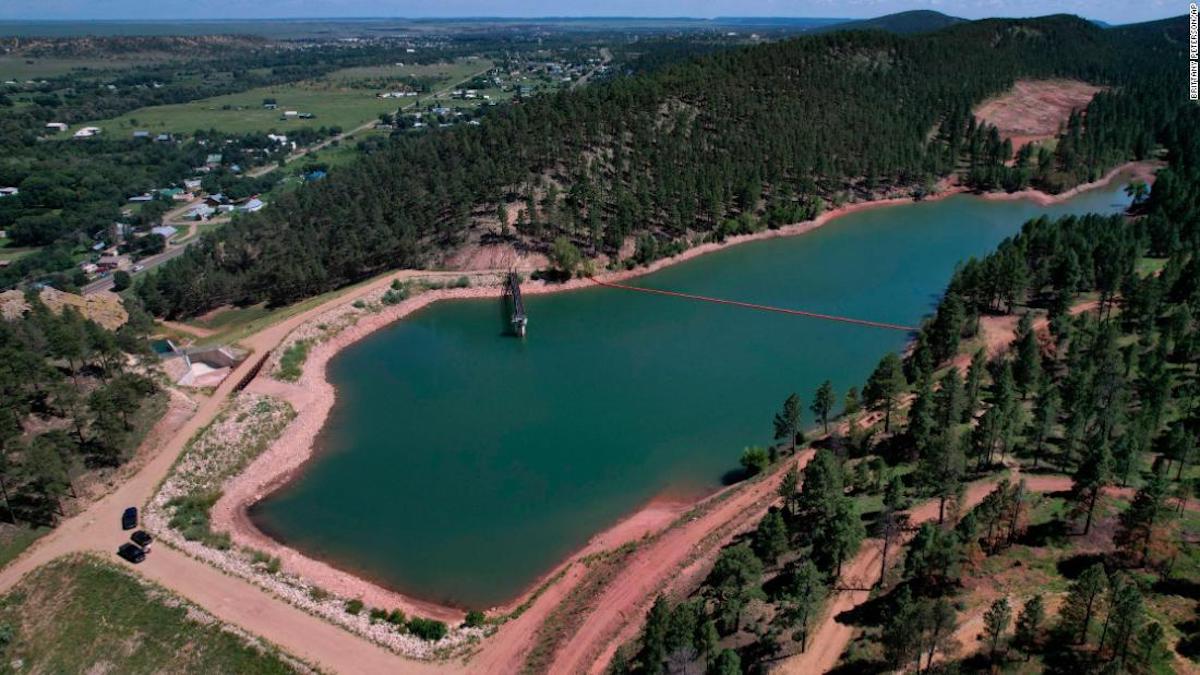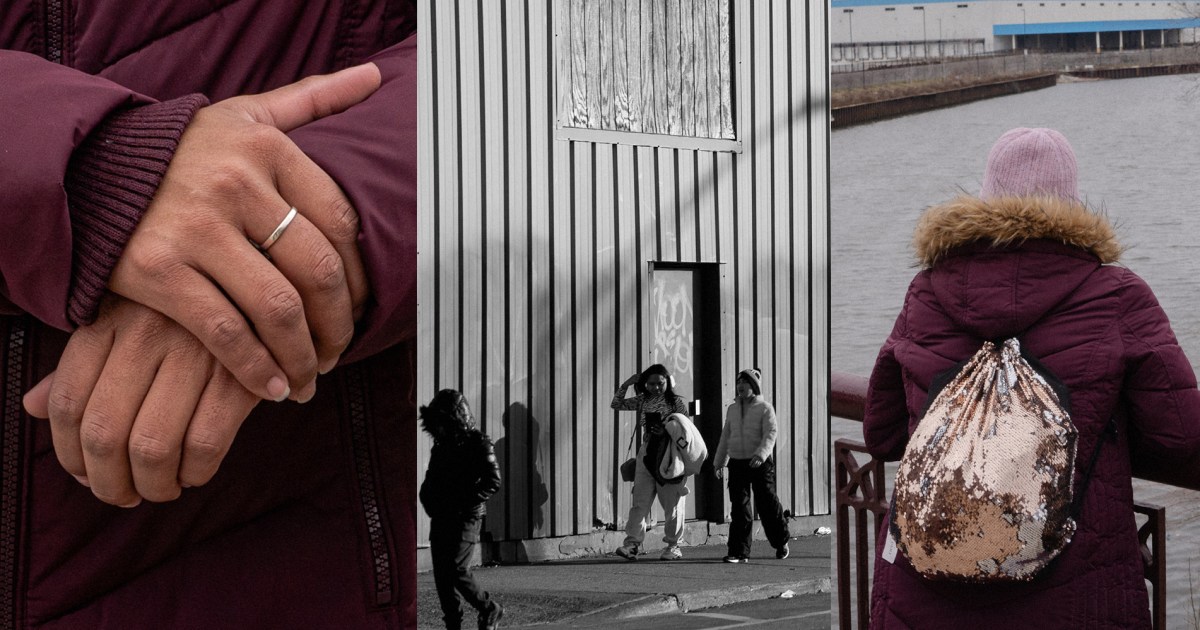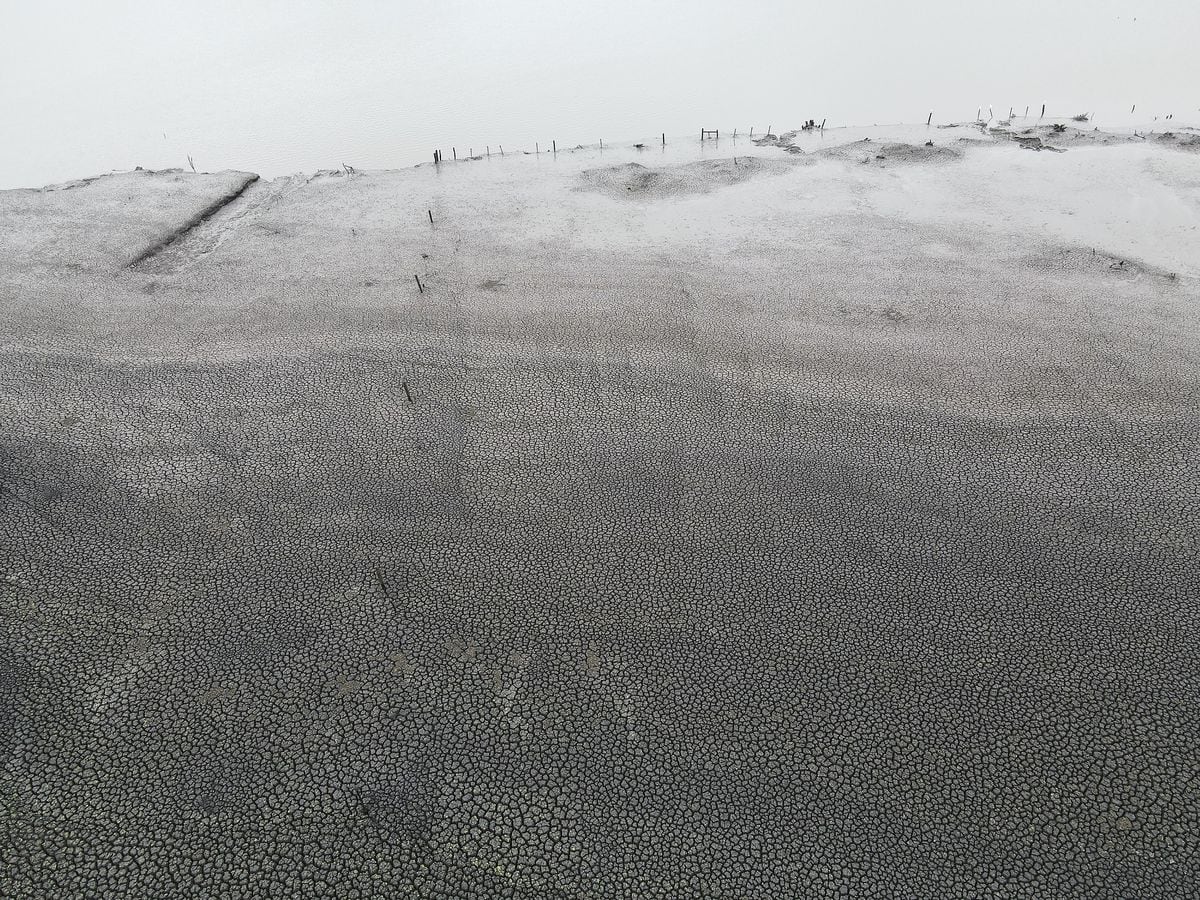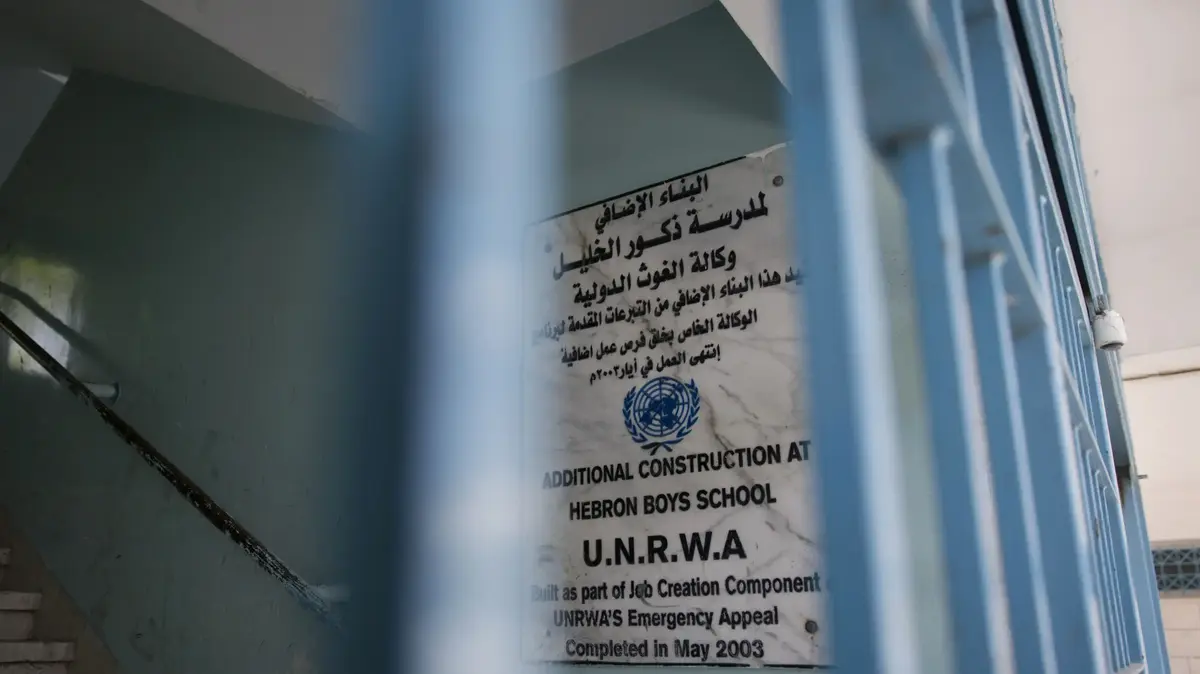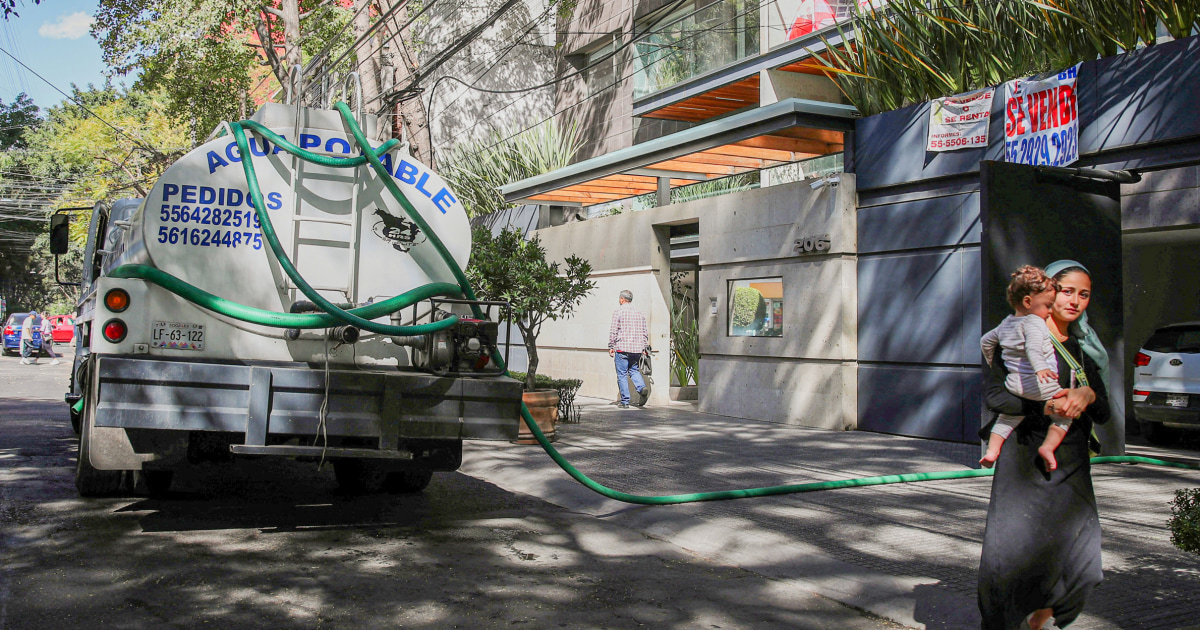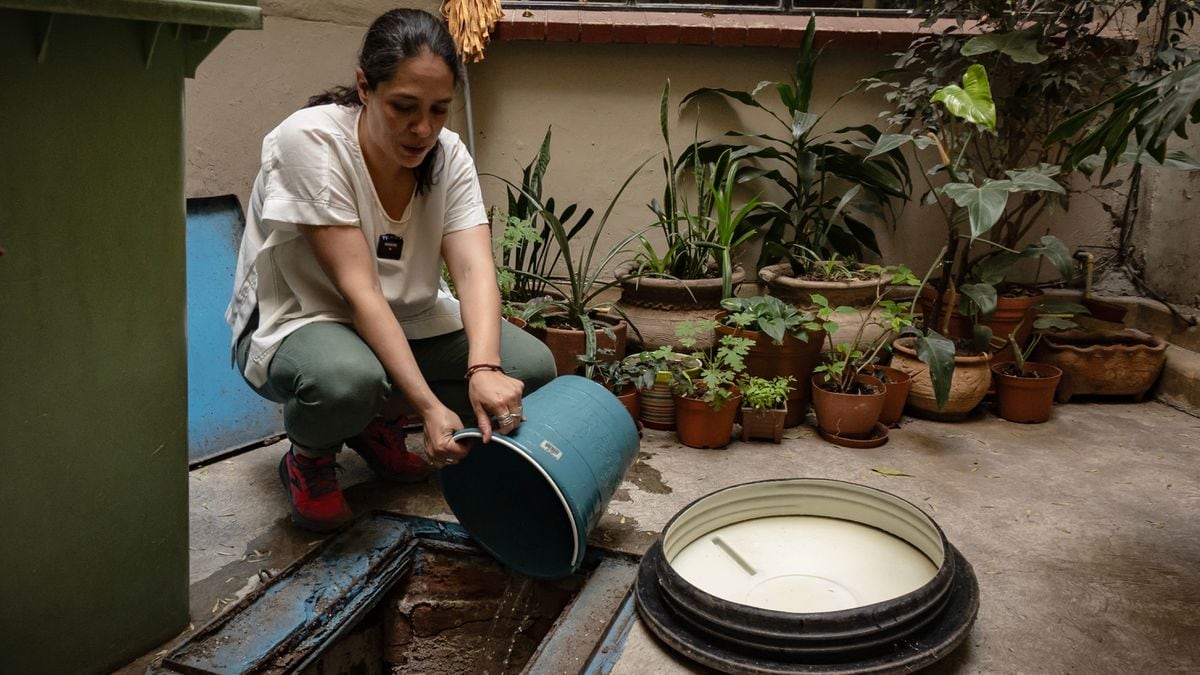China creates artificial rain against the worst heat wave in its history 0:52
(CNN) --
A New Mexico town has about 20 days of fresh water left, and officials are scrambling to find another source to keep cancer-causing particles from flowing out of taps.
The hillsides around Las Vegas, New Mexico, were ravaged by the largest wildfire on record in the state this spring, burning more than 340,000 acres (137,593 hectares).
Then an unusually wet monsoon season brought significant summer rains, something that would normally be celebrated in the drought-stricken West, but instead has led to one disaster after another as rain washes charred debris into the system. water of the region.
Pakistan's deadly floods created a huge inland lake 100 kilometers wide, according to satellite images
Now, one of the city's two reservoirs is full of polluted water that the current filtration system can't handle.
It's also a health risk: When carbon reacts with high levels of chlorine used to treat water, it can become carcinogenic.
"We need to get the carbon out of the water before we add disinfection," Las Vegas Public Services Director Maria Gilvarry told residents at a recent forum.
With time running out to secure a new clean source, city officials plan to spend this weekend testing and pre-treating water from a nearby lake, hoping it might provide enough to keep taps clean.
advertising
"Fingers crossed," Las Vegas Mayor Louie Trujillo told CNN, adding that the tests "will determine the quality of the water that we will send to one of our reservoirs."
It could take several days to complete the tests and pretreatment to get it right;
Gilvarry told CNN that the key is finding the right level of chemicals that will make the water drinkable, but not so high that it creates carcinogenic byproducts in the supply.
An employee of a water treatment plant holds a sample of contaminated water from the Gallinas River in early August.
If the quality of the new water source is good enough to pass through the city's water infrastructure, it will buy a few more months of water, which officials hope will be enough time to install another treatment system capable of processing the sediment-laden water in its second tank, currently unusable.
Otherwise, city and state officials may need to implement a boil order or take other steps to ensure clean water;
but it's too early to say what those actions might be, Gilvarry said.
It's a particularly frustrating situation, given how good the monsoon season was this year.
"After the biggest fire in the state's history, we had the best monsoon season in probably 14 years," Trujillo told CNN.
"Unfortunately, we couldn't use any of that water that came down from our river because it was too polluted for the treatment facility that we currently have."
Giant trees, tiny particles
The megafires in the West do more than burn trees and bushes.
A massive, hot fire also completely changes the composition of the soil, making it less stable, more prone to erosion, and therefore more likely to pass into the water system.
In the case of Las Vegas, the massive scar left by the Calf Canyon/Hermits Peak fire combined with heavy monsoon rains resulted in thousands of acres of ash and debris falling into the Gallinas River watershed.
When erosion occurred, it posed a double threat to the city's water supply.
One was that trees and rocks could fall into the river and damage water infrastructure.
The other was that the ashy mud could contaminate the water itself.
The US Army Corps of Engineers built debris catchment networks that have prevented damage to the water infrastructure itself, said Army Corps Capt. Robert Zebrowski, and "luckily they haven't had a giant flow of trees ".
The Calf Canyon/Hermits Peak Fire burned hundreds of thousands of acres near Las Vegas, New Mexico, earlier this summer.
But the smaller particles have been much more difficult to control.
The Army Corps installed wattles (mesh nets filled with hay) throughout the basin to try to catch the ashy mud before it got too far into the water system.
It has curbed pollution, but it is not a solution to the problem, Zebrowski said.
"There's no way to stop ash from getting everywhere," Zebrowski added.
Gilvarry said that even if they can secure a clean backup source, there will be a certain amount of sediment in the drinking water for the next decade simply because the fire burned a large swath of land surrounding Las Vegas.
live with less
As Las Vegas counts down the days it still has clean water, residents have been living on less and less.
"It's pretty critical right now, we're doing everything we can," Trujillo said, adding that citizens have been asked to reduce their water consumption to 166 liters (44 gallons) of water per day per person, conserving as much water as possible.
This collective conservation has bought Las Vegas more time.
Gilvarry told CNN that he has allowed city officials to stretch his uncontaminated reservoir about a week longer than previous estimates.
Bradner Reservoir, which supplies drinking water to the city of Las Vegas, New Mexico.
Las Vegas was already operating under drought restrictions before the wildfire hit earlier this year, asking residents not to fill pools, wash cars or water lawns.
But the fire and its aftermath turned the water situation into a crisis.
Trujillo said the community has been strong and stuck together in the face of an incredibly difficult year.
"People in this area are so strong and very cooperative," he said, but added that residents are "very worried."
State and federal funds have helped the community obtain at least a temporary water treatment system, but Las Vegas needs much more funding to replace its current water treatment facility with updated infrastructure to pre-treat its water.
Trujillo hopes the immediate crisis can help propel a longer-term solution.
"The silver lining for me is that the most permanent solution to this is to replace our water treatment plant and upgrade some of our infrastructure," he said.
"That's still a long way off, but now it's close at hand."

